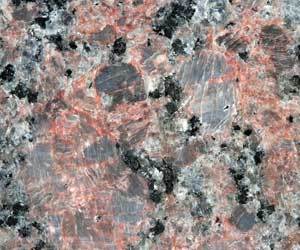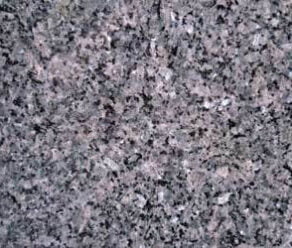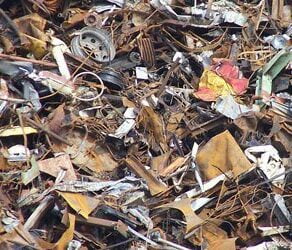Henry asked: How do I clean a granite headstone?
Headstones  can gather all types of dirt and stains from the weather and surrounding grounds. These stains can build up overtime and lead to unsightly deposits as well as mold and fungus growth. Maintaining the headstone not only makes it look better, it helps to preserve it as well. Granite is a hard stone that can tolerate cleaning without damaging the surface or making it susceptible to further damage. Cleaning the headstone does not have to be difficult. Follow these guidelines for the best results.
can gather all types of dirt and stains from the weather and surrounding grounds. These stains can build up overtime and lead to unsightly deposits as well as mold and fungus growth. Maintaining the headstone not only makes it look better, it helps to preserve it as well. Granite is a hard stone that can tolerate cleaning without damaging the surface or making it susceptible to further damage. Cleaning the headstone does not have to be difficult. Follow these guidelines for the best results.
You Will Need:
- Non-ionic cleaner (ex: Photo Flo)
- Water
- Buckets
- Soft cloths
- Sponges (natural are best)
- Non-metallic scrub brushes with a variety of stiffness levels
- Non-metallic scrubbing pads (NO Brillo, Scotchbrite or steel wool)
- Kaolin/porcelain clay
- Glycerin
- Paper towels
- Plastic wrap
- Masking tape (wide)
- Wooden or plastic scrapers.
Steps to Clean the Headstone:
- Begin by looking the headstone over to check for signs of damage. If there is cracking, delaminating, flaking, or other weak areas, proceed with caution. Do not put more stress on an area that is already weak or it will lead to further damage. A dirty headstone is better than one that is broken or damaged further.
- It is best to use a non-ionic cleaner to clean headstones. These cleaners are available at various locations that sell photography, janitorial and conservations supplies. They do not produce the salts that can be harmful and leave additional staining. They also aid in the wetting of masonry so that the soil and dirt can be removed more effectively. Choose your cleaning product carefully and always test a small, hidden area first to ensure it creates the desired results. Though the specialized cleaners may be more expensive, they are more effective and better designed for cleaning these stones than regular household granite cleaners.
- Fill your bucket with water. If there is a water source nearby, a hose will offer a great tool for rinsing as you work. If no water supply is available, bring several buckets along to keep clean water available at all times.
- Combine one ounce of the non-ionic cleaner with 5 gallons of water.
- Moisten the sponges and brushes with the water and scrub the areas gently.
- Work from the bottom of the stone to the top to avoid streaking. Rinse frequently to remove any running water.
- If there are areas with heavy build-up, mix one part liquid vegetable glycerin with one part water. Glycerin is available at most pharmacies or in the baking aisle of grocery stores.
- Make a poultice with the glycerin mixture and porcelain clay.
- Apply it to the surface where the build-up exists and cover with plastic wrap.
- Tape down the edges to keep the area moist. Allow this to set for several hours to overnight.
- Return and remove the plastic wrap.
- Gently scrape away the softened build-up with a wooden spatula or scrub it with a non-metallic scrubber.
Additional Tips and Advice
- Be sure you know the material before cleaning the headstone. Headstones can be constructed from a variety of materials including limestone, marble and sandstone. All of these stones are much softer than granite and require different cleaning methods.
- Do NOT use normal household cleaners, soaps and detergents (Ivory, Formula 409, bleach, TSP, laundry detergents, dish detergents, etc.) to clean headstones. Also, avoid acids such as Muriatic acid or Phosphoric acid as they can damage the surface.
- Pressure washers can be used to clean granite headstones, but use caution around the carved areas. Often these are coated with a black paint to make them easier to read. The pressure from the washer will remove the paint and leave no difference in the coloring. It will appear as if you have washed away the wording.
- Want to clean it naturally? Try snails. They feast on mold, mildew and other growth that causes tombstones to look discolored and damaged. For more information, see the article, “A Unique Method for Cleaning Headstones.”
- If you have concerns about the headstone, or are cleaning a very old headstone, consult a conservation specialist for the best cleaning methods. There are additional methods that professionals have been trained in. They are able to properly use harsher chemicals as cleaning products safely and effectively. It is often worth the expense of hiring someone to clean a headstone. It protects the investment made in the monument to our loved ones.









What can be used as a sealer to preserve the granite after it has been cleaned?
You are not supposed to use a sealer of any kind on the natural rock headstones. They are porous and water will slowly move up from the ground through the rock and then out the surface. Sealers trap the water and cause a buildup of pressure just under the surface that can push thin layers of rock to flake off. As you can imagine, that causes permanent and unsightly damage to the surface. It is not worth it.
Thanks for this information. Is there anything you can put on a granite headstone to make it shine after you have cleaned it?
Ridiculously complicated.
I have used a pumice stone with good results to remove water residue (scale) from granite. I’m sure it would work for other stains. Keep it wet and scrub and scrub, rinse with water and clean and dry with towels. If you see scratch marks, they are probably in the scale, which is not yet completely removed. There are finishing products to help seal and shine available for counter tops. I am tempted to try olive oil. I have not used it on marble, limestone, etc.
What would you use to remove adhesive on a granite headstone?
Yellowish headstone in a cemetery?
Someone left a candle on top of a monument base on. After it melted, all the wax got into the black grenite and left a dark mark on the top and front rock surface.
Mike…Thanks.
Michael,
This is the article you need: How to Remove Candle Wax Stains from Stone. The dark stain you are describing is prrobably where some wax soaked into the stone (as opposed to a dye stain from the candle dye). For that, start with step 2. Of course, be sure to test any chemical in a small hidden area first to loook for any adverse reaction. Good luck!
Can you use muriatiac acid, a weak solution, to clean existing lettering on a black granite headstone?
Fred,
Muriatic acid can damage the surrounding stone, and probably the lettering as well. Clean the lettering while cleaning the stone using the method above. Good luck!